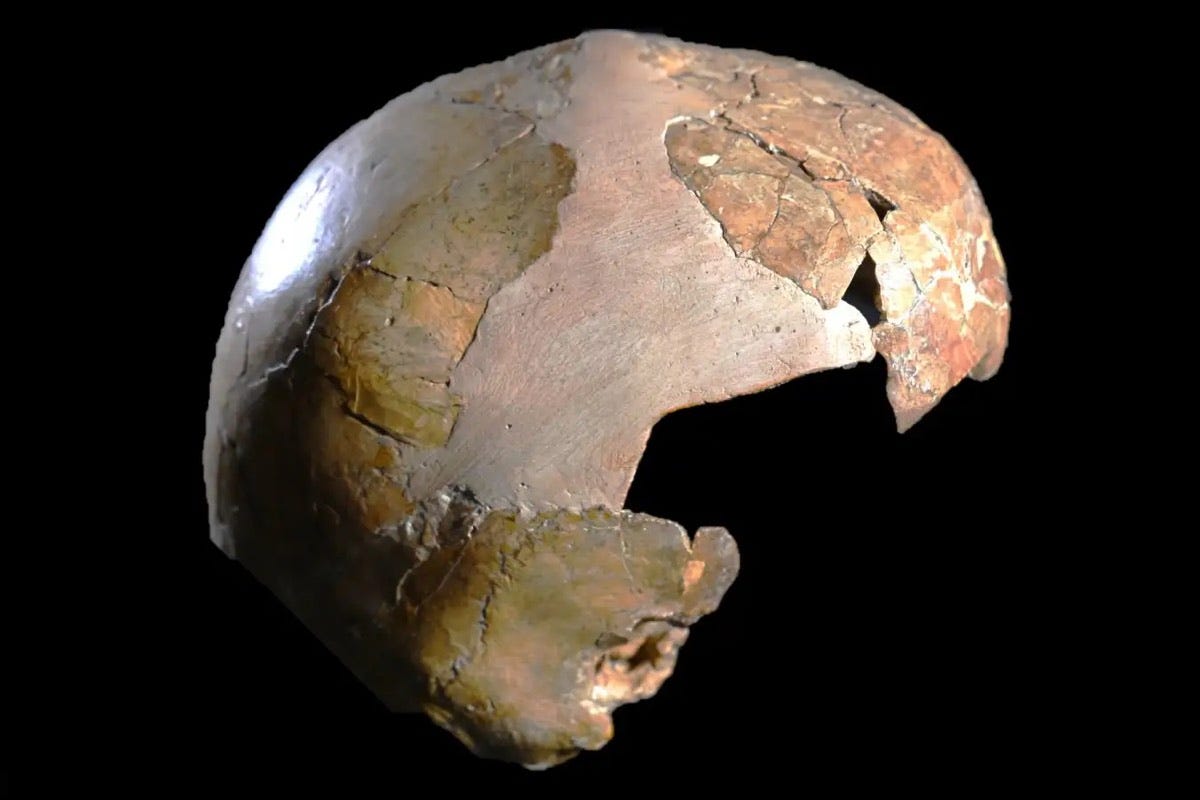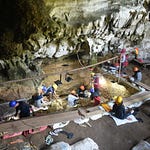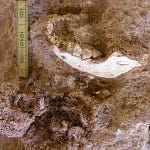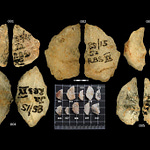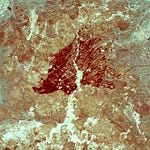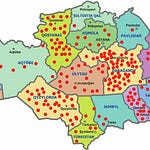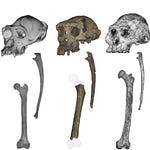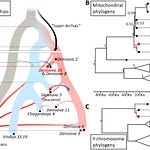In the rocky hills just south of Haifa, inside the limestone chamber of Skhul Cave, archaeologists in 1929 uncovered a child's skeleton that refused to fit neatly into any category. The remains were small, likely belonging to a child between three and five years old, buried with care more than 140,000 years ago. For nearly a century, researchers puzzled over the mixture of anatomical traits. Was this simply a variation within early Homo sapiens, or something more complicated?
A new study published in L’Anthropologie1 adds fresh perspective to this long-running debate. Using high-resolution CT scans, a team led by Bruno Bouvier, Anne Dambricourt Malassé, and Israel Hershkovitz revisited the neurocranium and mandible of the Skhul child, comparing them against Neanderthal specimens from the Musée de l’Homme in Paris. The results suggest a hybrid identity—a young individual born of two ancient lineages, Homo sapiens and Homo neanderthalensis.



